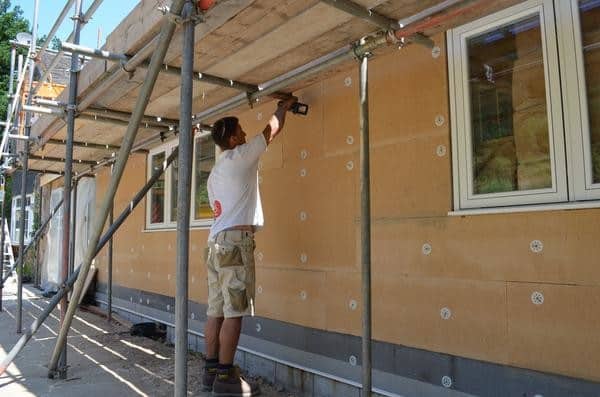SPECIFICATION GENERATOR
Find out which low impact materials are right for your building project.
What type of insulation should I use when building my sustainable home?
Find out more about our approach to this building scenario

Fundamentally, more insulation is better than less. The more you can afford to use, the less heating will be required and the more sustainable your house will be, with a few caveats such as good airtightness, etc.
From an environmental perspective it is worth considering what insulation materials are made of, how recyclable they are, how polluting they are and how long they last. These aspects determine their environmental impact and their sustainability. Beyond this there are other properties of insulation materials which make some more useful than others at creating healthier and more comfortable indoor environments.
Generally, creating buildings with more thermal mass (ability to store heat in the fabric of the building) is an effective way to reduce the heating requirement of a building. High mass insulation materials such as wood fibre insulation and other natural fibre insulations store and release heat in such a way that keeps buildings at a steady temperature, often with no input from a heating system.
Natural fibre insulations are generally denser than synthetic, high performance insulations and so are very good at absorbing sound, helping to create quiet indoor space. As they are made from plant fibres they also disperse moisture very effectively, helping to keep buildings dry and improving the longevity of the structure of the building.
This is not to say synthetic insulation is not as good as natural fibre insulation. Underground or below damp proof course, you need to use synthetic materials because they do not biodegrade. In certain areas of a building you may need to use mineral fibre to provide a fire break or extruded polystyrene to insulate in frost prone areas.
To create the best environment internally you’ll need a combination of different insulation materials and make use of their different characteristics. Try to bear in mind that the cheapest, thinnest insulation may not save you the most money in the longer term or create the most comfortable buildings.
Organisations like the AECB (Association for Environment Conscious Building) http://www.aecb.net or the Passivhaus Trust http://www.passivhaustrust.org.uk are great sources of relatively impartial knowledge.
WHAT’S NEXT?
If you want to find out more about how to effectively manage your sustainable building project, check out The Self-Build Series. This series of guides has been put together to you understand sustainable construction. We hope you find them useful!
